Salutations to our SEO friends! As we set out on our adventure through the complex realm of search engine optimization (SEO), we are fully aware that getting there also requires skillful path-finding. Today, we delve into the art of on-page SEO and unveil the common pitfalls to steer clear of.
On-page SEO is a pillar in our goal of online dominance and frequently determines where our website ranks in search results. Yet, even seasoned travelers in this realm can stumble upon dangerous terrain. So get ready and come along as we investigate the top on-page SEO blunders to avoid and turn your SEO strategy into a well-composed symphony.
What is SEO and on-page SEO?
Before we embark on this enlightening journey through the most common on-page SEO mistakes, we must establish a solid foundation by aligning our perspectives on the fundamental concepts.
Search engine optimization, often referred to as SEO, is the practice of enhancing a website’s visibility on leading search engines, such as Google and Bing. Within this expansive field, on-page SEO takes center stage as the meticulous process of optimizing individual web pages to elevate their standing in search engine rankings.
In essence, on-page SEO demands a meticulous examination of various on-site elements, including but not limited to content quality, meta tags, user experience, and URL structures, to render your website more appealing both to search engine algorithms and, crucially, to human users.
Why it’s important to avoid these on-page SEO mistakes
Now that we’ve garnered a comprehensive understanding of on-page SEO, let’s delve into the compelling reasons for guarding against the all-too-common blunders that can jeopardize your digital presence.
Search Engine Rankings
Firstly, one must appreciate that the positioning of your website within search engine results is of paramount importance. Errors in on-page SEO can lead to a major drop in rankings, a fate akin to disappearing into the depths of obscurity on page 10 while your target audience lingers on page 1.
Not only does a drop in rankings mean less visibility and traffic, but it also hinders your ability to attract potential customers and generate leads. Additionally, maintaining a high position in search engine rankings is crucial for establishing credibility and trust among users, as they often perceive websites on the first page as more reputable and reliable.
User Experience
It is essential to visualize a scenario wherein a visitor lands on a website that displays an awful lag in page loading, a complex navigation system, and confusing content. Invariably, such a visitor would promptly navigate away. Poor on-page SEO can bestow upon your visitors an analogous, disappointing experience.
Competitive Advantage
As the digital landscape continues to grow with competition, it is essential to recognize that your competitors are, in all likelihood, fervently investing in SEO endeavors. Properly staying clear of on-page SEO oversights endows you with a distinct edge, affording your brand higher visibility and enhanced credibility on the coveted first page of search results.
Return on Investment (ROI)
Patience indeed plays a role in SEO, with substantial returns achievable over the long term. However, regrettably, missteps can hinder progress and indefinitely prevent the realization of these rewards. Addressing on-page SEO with due diligence increases the prospects of a more expeditious ROI.
So, you see, understanding the ABCs of on-page SEO and steering clear of common boo-boos is the name of the game. As we journey through this article, we’re going to dissect these mistakes one by one and share our savvy insights on how to sidestep them.
The 13 Most Common On-page SEO Mistakes You need to avoid
The goal of perfection frequently results in a variety of difficulties in the complex realm of search engine optimization (SEO). The first step in avoiding common on-page SEO mistakes is to understand them. We will look at the traps that even seasoned digital marketers occasionally fall into. From ignoring mobile optimization to underestimating the importance of meta tags, we’ll dissect these issues to help you steer clear of them.
Ignoring mobile optimization
Mistake
In today’s mobile-centric world, neglecting mobile optimization is a cardinal sin. It is like excluding half of your potential audience. Websites that don’t adapt to various screen sizes and devices risk alienating a significant portion of their audience.
Not only does mobile optimization affect the user experience, but it also plays a crucial role in search engine rankings. Search engines prioritize mobile-friendly websites, so neglecting this aspect can result in lower visibility and traffic for your site. It is essential to ensure that your website is responsive and optimized for mobile devices to maximize its reach and engagement with users.
Solution
Implement responsive design, ensure fast mobile loading times, and prioritize the mobile user experience. Google’s mobile-first indexing makes this non-negotiable.
By using responsive design, your website will automatically adjust its layout and content to fit different screen sizes and devices, providing a seamless experience for mobile users. Additionally, optimizing your website’s loading speed for mobile devices is crucial, as slow loading times can lead to high bounce rates and lower search engine rankings.
In addition, regularly test your website’s mobile compatibility and make necessary adjustments to improve its performance. Keep up with the latest mobile design trends and technologies to stay ahead of the competition and provide a seamless browsing experience for mobile users. A mobile-responsive design not only improves user experience but also boosts your SEO ranking.
Neglecting website speed
Mistake
Slow-loading websites are a user’s nightmare. They lead to high bounce rates and can negatively impact search rankings. Not only do slow-loading websites frustrate users, but they also hinder the overall user experience and can result in a loss of potential customers.
Imagine standing in a never-ending queue; your patience wears thin, right? Slow-loading pages evoke a similar response from your visitors. Page speed is a critical ranking factor, and sluggish pages can lead to high bounce rates and losses in potential leads.
Solution
Regularly optimize and compress images using image compressing tools like TinyPNG before you upload them to your website, leverage browser caching techniques to ensure a fast and efficient browsing experience for your visitors, use CDNs (content delivery networks), minify the CSS and JavaScript codes of your website, and minimize HTTP requests and server response times to ensure snappy page loading and improve website speed.
Tools like Google PageSpeed Insights, GTmetrix, and Pingdom can pinpoint areas for improvement, helping you identify specific areas of your website that may be causing slow loading times and fixing them using these optimization techniques effectively.
Additionally, consider implementing lazy loading for images and videos, as this can greatly improve the initial load time of your web pages. By taking these steps to improve the speed of your website, you can provide your customers with a smooth and enjoyable browsing experience.
Overlooking content quality
Mistake
Content is king, but only if it’s of high quality. In addition to failing to engage your audience, thin, irrelevant, or duplicate content can hurt your SEO efforts. Search engines give websites with original, high-quality content that benefits users more priority. You risk losing potential clients and lowering your website’s ranking in search engine results by ignoring the quality of your content.
Picture this: you’re embarking on a journey to an exotic destination, but your guidebook is filled with nonsense. That’s what happens when your website lacks quality content. Search engines prefer well-crafted, informative, and engaging content. Neglecting this aspect is like setting sail without a map.
Solution
Invest time and effort into creating informative, engaging, and original content that resonates with your target audience and addresses their needs. Conduct keyword research to align content with search intent.
Additionally, regularly updating your content and incorporating relevant keywords can help improve your website’s visibility in search engine rankings. Remember to optimize your content for mobile devices to reach a wider audience and enhance the user experience.
Try to Incorporate diverse content formats like articles, infographics, videos, and more to captivate your audience. Strive for in-depth, comprehensive content that answers your visitors’ questions and provides value. And always remember, content is king in the SEO realm.
Disregarding Analytics and Tracking
Mistake
An opportunity is lost when one operates blindly without analytics. If you ignore user behavior data, you will not know what is working and what isn’t. This may result in lost chances for expansion and improvement. By utilizing analytics and tracking tools, you can gain valuable insights into your audience’s preferences, allowing you to make informed decisions and optimize your website accordingly.
Solution
Implement tools like Google Analytics and other tracking and analytics tools to track website performance. Regularly review the data to identify areas for improvement and track the impact of SEO efforts. By analyzing the data, you can determine which pages are performing well and which ones need optimization.
Additionally, tracking user behavior and engagement metrics can help you understand how visitors are interacting with your website, enabling you to make targeted improvements to enhance their experience.
On top of that, use A/B testing to experiment with different website elements and determine which ones resonate best with your audience. This will help you make data-driven decisions and continuously optimize your website for better performance and user experience.
Underestimating the Importance of Meta Tags
Mistake
Meta tags, including meta titles and descriptions, play a vital role in search engine rankings. Neglecting them leaves an empty space that search engines may fill with irrelevant information.
Think of title tags and meta descriptions as the welcoming handshake to your website. Neglecting these critical elements is akin to slamming the door in your visitors’ faces.
By not optimizing your meta tags, you risk missing out on valuable opportunities to improve your website’s visibility and attract organic traffic.
Solution
Craft compelling, engaging, and keyword-rich meta titles and descriptions that accurately represent the content of each page and entice users to click through to your site. Use unique meta tags for each page to provide specific information and improve the chances of your website appearing in relevant search results. Additionally, consider incorporating relevant keywords naturally throughout your website’s content to further enhance its visibility and ultimately drive more qualified visitors to it.
These elements not only impact your search engine ranking but also influence the click-through rate from search engine results pages (SERPs). Be mindful of their length (a maximum of 60 characters for meta titles and 160 characters for meta descriptions) to ensure that they display correctly in search results.
Having a poor internal linking strategy
Mistake
Imagine exploring a vast library with no signage or maps. Internal linking is like connecting the dots in your content, making it easier for visitors to navigate and discover related topics.
Internal linking should never be neglected, as it can hinder your SEO efforts and lead to a fragmented user experience, and make it more difficult for search engine crawlers to understand the architecture of your website.
Solution
Implement a logical and organized internal linking structure within your content to guide users to other valuable pages on your site. Use descriptive anchor text that provides context for the linked page and ensure that links are relevant to the content.
Moreover, consider incorporating keyword-rich anchor text in your internal links to improve the SEO value of your website. Regularly review and update your internal links to ensure they are still relevant and functional.
By implementing a strong internal linking strategy, you can improve the navigation and user flow on your website, making it easier for visitors to find relevant information. This can also help search engines understand the hierarchy and importance of your web pages, ultimately boosting your website’s visibility in search results.
Not Optimizing for User Experience
Mistake
SEO isn’t just about pleasing search engines; it’s also about satisfying users. A poor user experience can lead to higher bounce rates and lower rankings in search results. When visitors have a hard time navigating your website or finding the information they need, they are more likely to leave and find a competitor’s site instead. By optimizing the user experience, you can keep visitors engaged and increase the chances of converting them into customers.
Solution
Prioritize user-friendly website design, intuitive navigation, and clear calls to action. Ensure that users can easily find the information they seek by implementing a well-organized menu structure and search functionality. Additionally, optimize page loading speed to minimize frustration and provide a seamless browsing experience.
Additionally, make sure your website is mobile-friendly, as an increasing number of users access the internet through their smartphones and tablets. Regularly test and optimize your website’s loading speed to ensure a smooth and efficient user experience.
Failing to refresh and update content
Mistake
Outdated content can lead to decreased user engagement and search engine rankings. Failing to update and refresh your website’s content is a missed opportunity to provide valuable and relevant information to your audience. It is important to regularly review and update your content to stay current and maintain the interest of your users.
Solution
Regularly review and update your content to keep it relevant and accurate. Add new information, statistics, or insights to breathe life into existing articles and make them more valuable to your audience.
Additionally, consider incorporating different formats, such as videos, infographics, or podcasts, to cater to different learning preferences and enhance user engagement. By consistently refreshing your content, you not only improve the user experience but also increase the likelihood of higher search engine rankings and attract new visitors to your website.
Keyword Stuffing and Over-Optimization (The Stuffing Syndrome)
Mistake
Overloading content with keywords can lead to a poor user experience and trigger search engine penalties, as it makes the content appear unnatural and spammy. It is important to focus on creating high-quality, informative content that is valuable to the reader rather than trying to manipulate search engine rankings through excessive keyword usage.
Additionally, over-optimization, such as using the same keyword too frequently (or what is called keyword stuffing) or using irrelevant keywords, can also harm your website’s credibility and visibility in search results. It is crucial to strike a balance between optimizing your content for search engines and providing a seamless user experience.
Imagine a conversation where someone keeps repeating the same phrase incessantly. Annoying, right? The same applies to SEO when you engage in keyword stuffing.
Solution
Use keywords naturally and strategically within your content. Focus on providing value and addressing user intent, rather than obsessing over keyword density or placement.
Aim for a balanced, keyword-rich approach that enhances your content’s relevance without sounding forced. Incorporate keywords in your headings, subheadings, and meta tags, but make sure they flow naturally within the context of your content since overloading your content with keywords disrupts its natural flow and readability.
Remember to diversify your keyword usage by including synonyms and related terms to broaden your reach. Ultimately, prioritizing your website’s user experience will lead to higher engagement and better search engine rankings.
Keyword research can also help you identify the best short-tail and long-tail keywords to use within your content. Perform thorough keyword research to discover the most effective and high-quality keywords for your niche. Use them strategically, ensuring they seamlessly integrate into your content.
Failure to Keep Up with Algorithm Changes
Mistake
Search engines continually refine their algorithms. Ignoring these changes can result in outdated SEO strategies that no longer yield effective results. It is crucial to stay updated with the latest algorithm changes and adapt your SEO tactics accordingly. Failing to do so can lead to a decline in your website’s visibility and organic traffic.
Solution
Stay informed about algorithm updates and industry trends. Adjust your SEO strategies accordingly to remain competitive in the search engine rankings. Regularly monitor your website’s performance and make necessary adjustments to optimize for the latest algorithm changes. Additionally, consider seeking professional help or attending SEO workshops to stay ahead of the curve and ensure your website maintains its visibility and organic traffic.
Lack of local SEO focus
Mistake
For businesses targeting local markets, overlooking local SEO tactics can limit visibility in local search results and hinder their ability to attract local customers.
Solution
It is crucial to implement local SEO strategies by optimizing your website with location-specific keywords, creating and optimizing a business profile in Google My Business and other directories, creating location-specific landing pages, and actively engaging with local directories and review platforms to obtain local backlinks.
By prioritizing local SEO strategies, you can increase your chances of appearing in relevant local search queries and drive more foot traffic to your physical store or service area.
Additionally, engaging with the local community via social media and online review websites can help your local SEO efforts by building brand awareness and establishing a positive reputation. Responding to customer reviews and addressing any concerns or feedback shows that you value your customers and their experiences. This can also encourage others in the community to choose your business over your competitors when searching for local products or services.
Failure to address duplicate content and plagiarism issues
Mistake
Duplicate content or plagiarized material can harm your website’s SEO and reputation. Search engines penalize duplicate content, and users lose trust in copied work.
Also, failure to address these issues can lead to legal consequences, as copyright infringement is a serious offense. It is important to regularly check and monitor your website’s content to ensure originality and maintain a positive online presence.
Solution
Create original content and use plagiarism detection tools to ensure its uniqueness. Canonical tags can also help address duplicate content issues by specifying the preferred version of a webpage for search engines. It is also crucial to properly attribute and cite any external sources used in your content to avoid copyright infringement. Regularly updating and refreshing your website’s content can also help maintain its originality and relevance, further enhancing your online reputation.
Neglecting the use of social media platforms
Mistake
Neglecting social media integration misses opportunities to amplify your online presence and engage with your audience more interactively and immediately. Social media platforms offer a vast audience reach and can significantly increase brand visibility and customer engagement. By neglecting social media integration, businesses risk losing out on potential leads, conversions, and valuable customer feedback.
Solution
Promote content through social media channels like Facebook, X (formerly Twitter), Instagram, YouTube, Pinterest, and TikTok. Encourage social sharing and ensure that social profiles are linked to your website to drive traffic and increase brand exposure.
Moreover, regularly monitoring and responding to customer feedback on social media platforms can help businesses build strong relationships and customer loyalty with their audience, improve overall customer satisfaction, and foster a sense of community around their brand.
By utilizing social media platforms, you can reach a wider audience, increase brand awareness, and drive traffic to your website, ultimately leading to potential conversions and sales.
Furthermore, social media allows businesses to gather valuable insights and data about their target audience’s preferences and behaviors, enabling them to tailor their marketing strategies and offerings more effectively.
Conclusion
Learning from mistakes is a hallmark of successful digital marketing. Recognizing and rectifying these common on-page SEO mistakes is your pathway to a stronger, more effective online presence. By continually refining your strategies and staying updated with industry changes, you’ll not only avoid these pitfalls but also pave the way for sustainable SEO success.
In addition, staying up-to-date with the latest trends and algorithms in search engine optimization will allow you to adapt your marketing strategies accordingly. This will help you stay ahead of your competitors and maintain a competitive edge in the ever-evolving digital landscape.
That’s it. Please add any related questions you may have concerning common on-page SEO errors in the comments section below, and we will try our best to respond. Thank you for showing interest in our content.

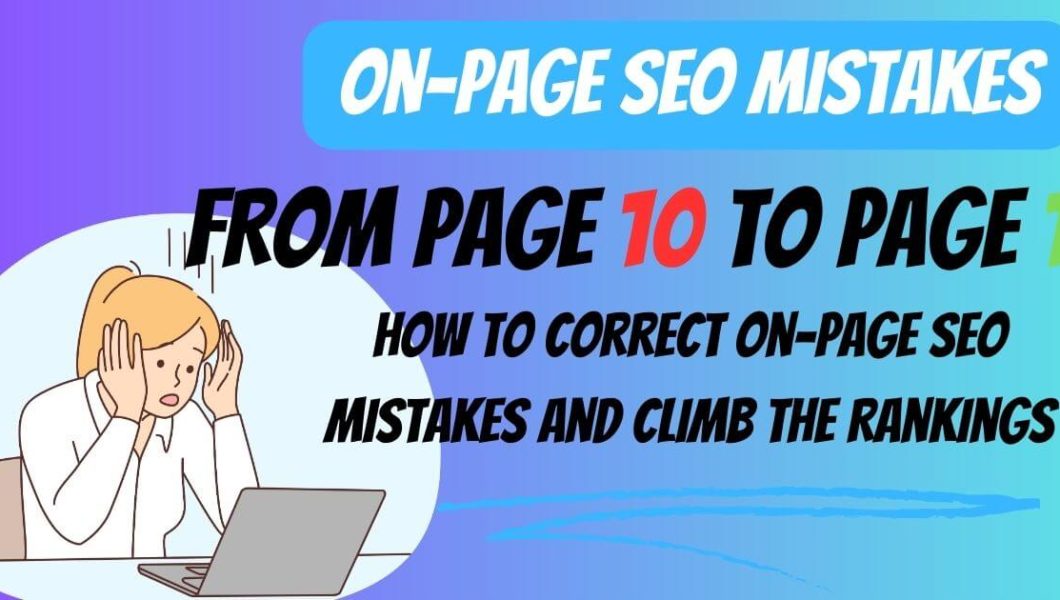
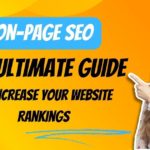

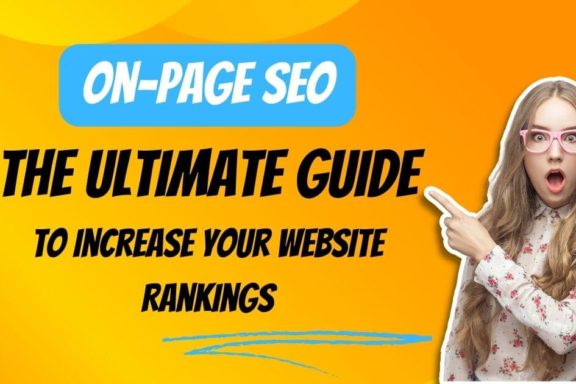
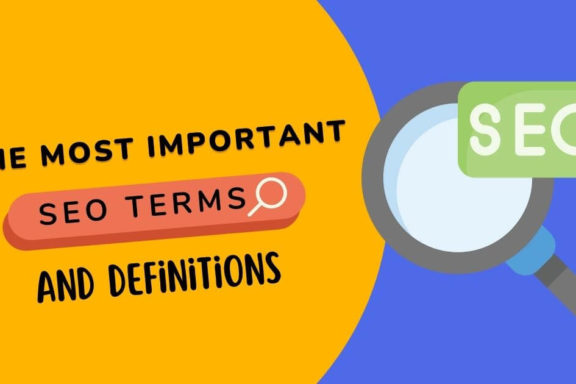
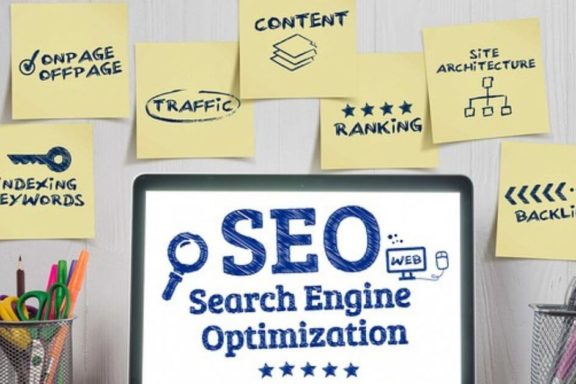
No Comments